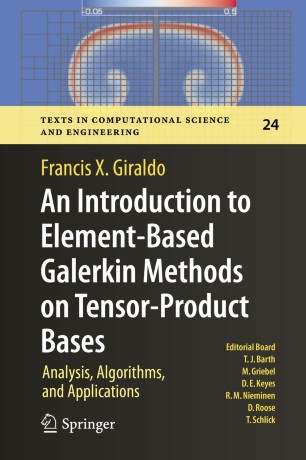

Most ebook files are in PDF format, so you can easily read them using various software such as Foxit Reader or directly on the Google Chrome browser.
Some ebook files are released by publishers in other formats such as .awz, .mobi, .epub, .fb2, etc. You may need to install specific software to read these formats on mobile/PC, such as Calibre.
Please read the tutorial at this link: https://ebookbell.com/faq
We offer FREE conversion to the popular formats you request; however, this may take some time. Therefore, right after payment, please email us, and we will try to provide the service as quickly as possible.
For some exceptional file formats or broken links (if any), please refrain from opening any disputes. Instead, email us first, and we will try to assist within a maximum of 6 hours.
EbookBell Team

5.0
78 reviewsThis book introduces the reader to solving partial differential equations (PDEs) numerically using element-based Galerkin methods. Although it draws on a solid theoretical foundation (e.g. the theory of interpolation, numerical integration, and function spaces), the book’s main focus is on how to build the method, what the resulting matrices look like, and how to write algorithms for coding Galerkin methods. In addition, the spotlight is on tensor-product bases, which means that only line elements (in one dimension), quadrilateral elements (in two dimensions), and cubes (in three dimensions) are considered. The types of Galerkin methods covered are: continuous Galerkin methods (i.e., finite/spectral elements), discontinuous Galerkin methods, and hybridized discontinuous Galerkin methods using both nodal and modal basis functions. In addition, examples are included (which can also serve as student projects) for solving hyperbolic and elliptic partial differential equations, including both scalar PDEs and systems of equations.